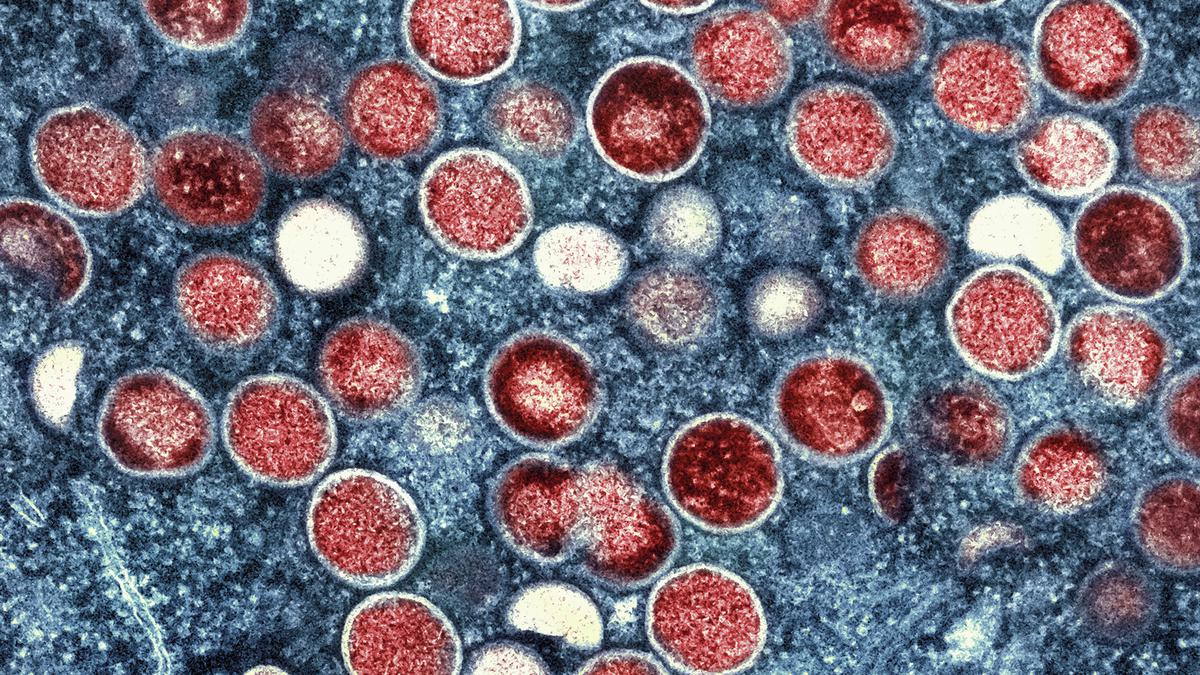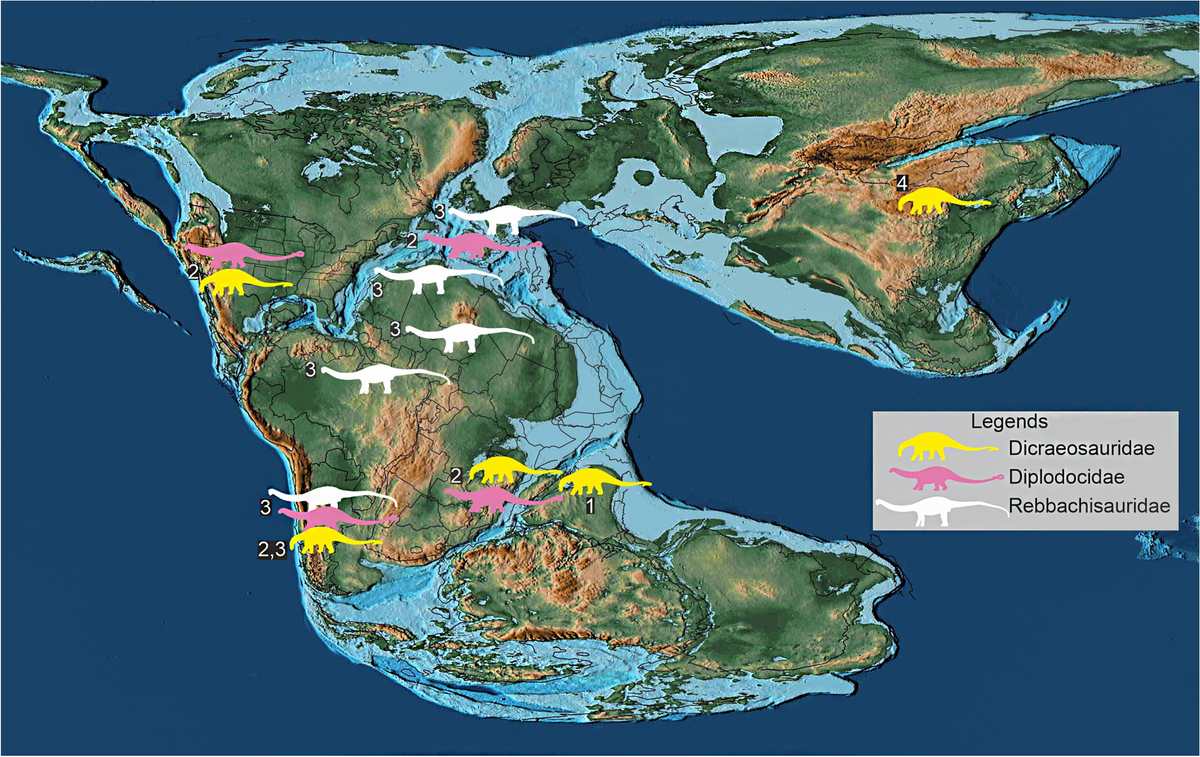A space-fill drawing showing a cross-section through a Zika virus particle as it interacts with a cell. The two main proteins of the viral envelope are shown in red and purple. The lipid membrane of the envelope is shown in lavender. The capsid proteins, in orange, are shown interacting with the RNA genome, in yellow, at the virus’s centre. The cell-surface receptor proteins are in green, the cytoskeleton in blue, and blood plasma proteins in gold.
| Photo Credit: David Goodsell (CC BY 4.0)
The mere presence of a virus in a bodily fluid doesn’t mean it is transmitted via that route. The Zika, dengue, and chikungunya viruses are present in fluids like saliva and semen but don’t spread orally or sexually. This fact has puzzled scientists for years, and now a research team has finally explained why.
On March 29, 2020, the World Health Organisation (WHO) posted a tweet that sparked concerns among scientists and prompted many to contact the WHO to say there was enough evidence to discredit the tweet’s contents, and suggest it steer clear of such assertions. The tweet was later proven to be factually incorrect but the WHO remained unconvinced for almost two years.
It read “FACT: #COVID19 is NOT airborne”.

Transmission is a crucial event in a virus’s life cycle, yet studying it has been very tricky. A virus that can’t transmit is of no consequence to anyone. Successful viruses have extraordinary adaptations selected through years of evolution to ensure they can jump to new hosts.
What does a virus do inside the body?
Most human viruses achieve this by ensuring they are present in bodily fluids that contact the outer environment, and subsequently a new host.
Once inside the new host, a virus must be present at the correct location to infect new target cells. Viruses are usually highly selective in the cells they infect. This phenomenon, called tropism, occurs because most viruses have special proteins on their outer surface that make contact with a receptor on the host cell. Any cell-type that makes the receptor can be infected by the virus.
For example, the receptor for HIV is a protein called CD4. Only cells that make the CD4 protein, such as T-cells and macrophages, can be infected by HIV. Similarly, SARS-CoV-2 uses a receptor called ACE2. Cells of the respiratory tract and some cardiovascular cells all express ACE2, and are target cells for SARS-CoV-2. HIV can’t infect respiratory cells and SARS-CoV-2 can’t infect T-cells or macrophages.
Viral transmission is an outcome of a chase inside the host: between the virus making copies of itself and the immune system trying to destroy the virus and infected cells. The virus must transmit before the immune system beats it or the host dies. One strategy viruses use to achieve this is by making proteins on the surface that have receptors on multiple cell-types. Such a strategy will allow them to infect different cell-types, allowing access to multiple body fluids, enabling faster transmission.

What is the PS receptor?
One such receptor is for a protein called phosphatidyl serine (PS). The PS protein is usually expressed by dying cells in the body, as a signal to the immune cells to destroy them. The immune cells express the PS receptor and fuse themselves with these cells, quietly destroying them. Viruses hijack this pathway with a process called apoptotic mimicry: by expressing the PS protein on their own surfaces, allowing them to infect the very cells that will destroy them.
The WHO’s tweet and its subsequent withdrawal exemplifies the difficulties of studying viral transmission. The problem is especially challenging when we’re studying viruses that can use the PS receptor for entry. Since the PS receptor is expressed by many cells – apart from some cells of the immune system – the virus tends to be present in multiple compartments. Yet the mere presence of a virus in a given compartment wouldn’t guarantee transmission from that route.
For example, the Zika virus can be detected in semen, saliva, and breast milk but rarely spreads through these means despite the presence of target cells in the oral and genital cavities. Zika transmits mainly via mosquitoes.
How does the body fend off these viruses?
Now, scientists at the Institute of Molecular Virology at the Ulm University Medical Centre, Germany, have identified a novel defence mechanism the human body uses to prevent Zika and some other viruses from transmitting via non-conventional routes. The study, published in the journal Nature Microbiology on March 25, explains how the body uses extracellular vesicles in these bodily fluids to inhibit viral infection.
Vesicles are small structures enclosed by fat that a cell uses to transport substances from one part of the cell to another. When they are secreted outside the cell, they’re called extracellular vesicles. The researchers discovered these extracellular vesicles are abundant in saliva and semen and contain the same PS proteins on their surface that viruses like Zika use for infection. The team also discovered the concentration of these extracellular vesicles that contain PS is low in blood and high in saliva and semen.
Through a series of experiments, they demonstrated the PS-containing vesicles compete for the same receptors the viruses use for entry, thus crowding the latter out and preventing an infection.

What does the discovery portend?
The group also showed that all viruses that use the PS receptor for apoptotic mimicry – the dengue, chikungunya, West Nile, ebola, and the vesicular stomatitis viruses – are inhibited by the presence of extracellular vesicles. The vesicles’ presence didn’t affect the infectivity of viruses that don’t use the PS receptor for entry, such as HIV and SARS-CoV-2.
The discovery of PS-coated vesicles for immunity represents a novel type of host defence against viral infection. While it is too early to speculate on potential therapeutic applications from this discovery, it opens up avenues for further research.
One thought-provoking, but also far-fetched, notion arising from the study is the possibility that PS-containing vesicles in humans could have influenced the evolution of mosquito-borne viruses. Perhaps these viruses were forced to look for an alternative when they couldn’t spread through saliva or semen and, to paraphrase Michael Crichton, “life found a way”.
Arun Panchapakesan is an assistant professor at the Y.R. Gaithonde Centre for AIDS Research and Education, Chennai.







